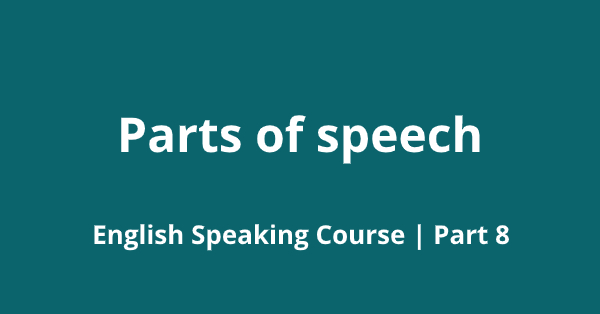What are the different parts of speech?
There are eight parts of speech: nouns, pronouns, verbs, adjectives, adverbs, prepositions, conjunctions, and interjections.
- Noun
A noun is a word that denotes a name, person, thing, place, thought, or quality. A noun can be both the subject and object of a sentence.
For instance:
The apple is kept on the table.
In this case, the noun is an apple which acts as the subject.
On the other hand, consider the following statement.
The mouse damaged the newspaper.
In this case, the noun is a newspaper, which acts as the object of the sentence.
Let us see some more examples of nouns.
I went to Australia this summer.
In this case, the noun is Australia, which is a place.
The ball bounced above the ground.
In this case, the noun is a ball, which is a thing.
- Pronoun
A pronoun is a word that comes in place of the noun. You cannot use the same noun throughout your sentences. To avoid repeating a noun, you use a pronoun in its place.
For instance, look at the following sentences.
Cecelia is a good student. She is the smartest girl in our class.
In this case, the pronoun ‘she’ replaces the noun ‘Cecelia.’
Who was knocking at the door?
In this case, the pronoun is ‘who.’
- Verb
A verb defines the state or action of a thing, person, or any other quantity. The words that describe what a person or thing is doing are known as verbs.
Here are some examples of verbs. For instance:
Selena was walking on the road.
In this case, the verb is ‘walking.’
I saw him near the window.
In this case, the verb is ‘saw.’
We are going to the park.
In this case, the verb is ‘are going.’
- Adjective
A word that modifies or describes a noun is known as an adverb. Moreover, Adjectives describe nouns.
For instance:
The beautiful flower was swaying in the wind.
In this case, the adjective is beautiful, which describes the noun ‘flower.’
I bought the purple dress.
In this case, the adjective is ‘beautiful,’ which describes the noun ‘dress.’
- Adverb
An adverb is a word that modifies a verb. An adverb describes a verb.
For instance:
I ran quickly to the playground.
Here, the adverb is quickly.
He got out of bed in a hurry.
Here, the adverb is ‘hurry.’
- Preposition
A preposition describes the relationship between a noun and a pronoun. Further, a preposition tells us how the nouns and pronouns relate to each other.
For instance:
Our school is across the street.
Here, the preposition is across.
The book is kept on the table.
Here, the preposition is on.
- Conjunction
Conjunctions join two words, clauses, or phrases.
For instance:
You need to wake up early if you want to reach on time.
Here, the conjunction is if.
Go to the storeroom and bring that old chair.
Here, the conjunction is and.
- Interjection
Any word that shoes, feelings, or emotions are known as an interjection.
For instance:
Alas! Her cat didn’t make it.
Here, the interjection is ‘alas.’
Oops! I spilled the milk.
Here, the interjection is ‘oops.’
In conclusion, there are eight parts of a speech. The different parts follow different rules in grammar. Learn the examples of all the types to speak fluent English.

